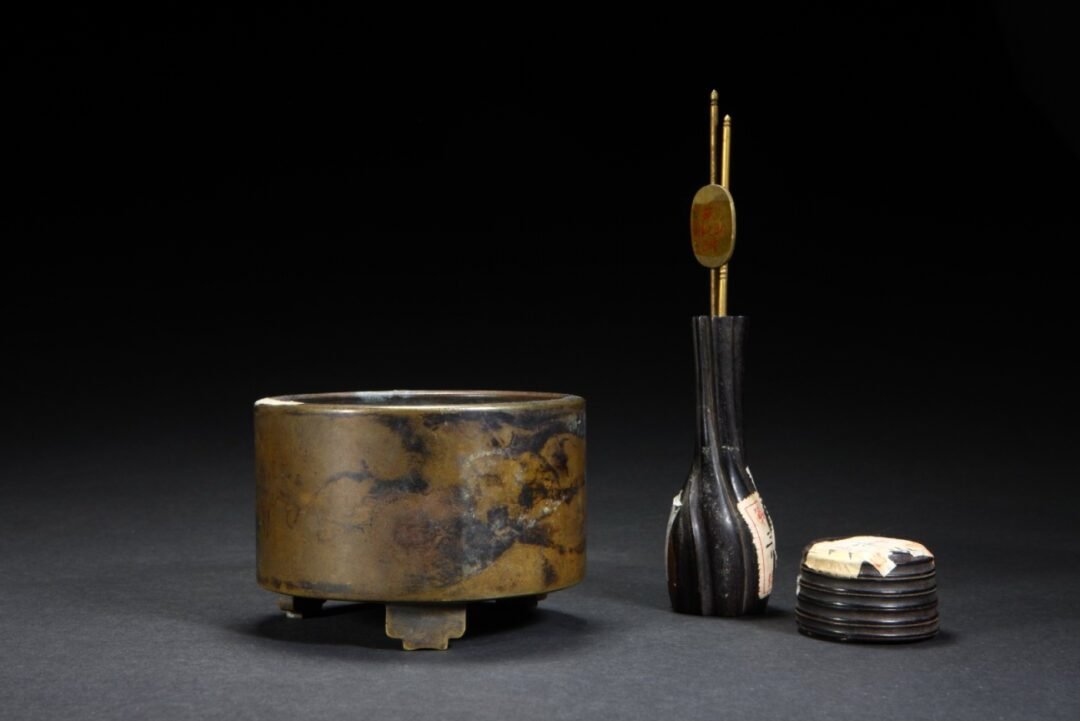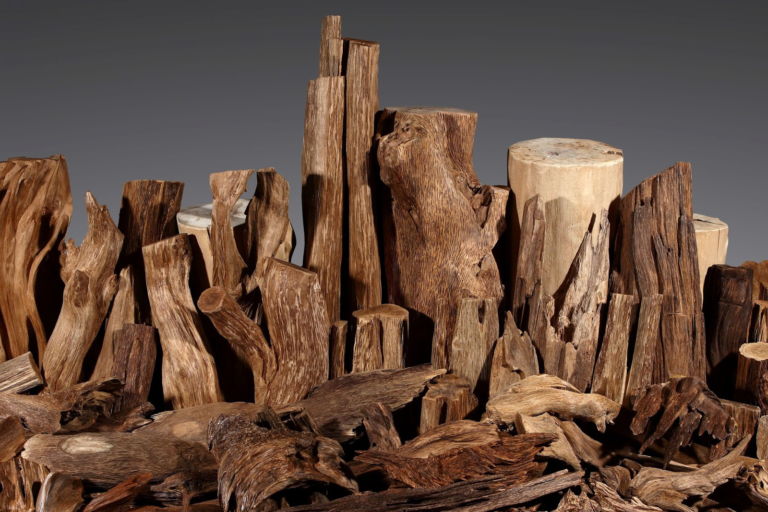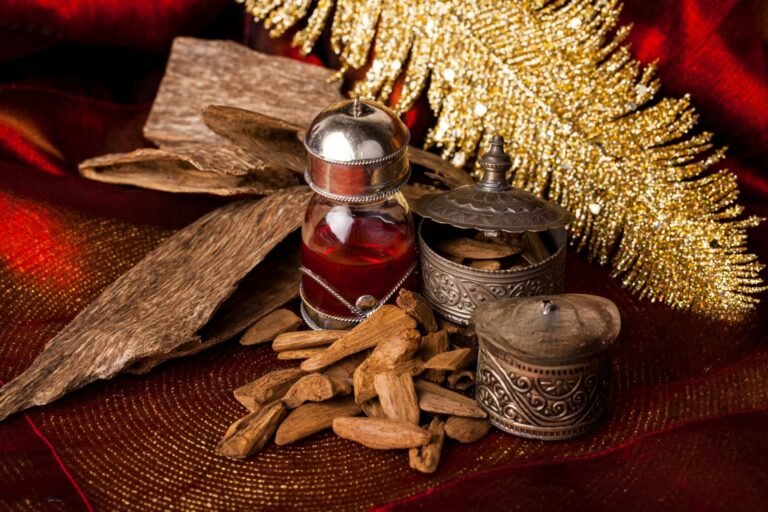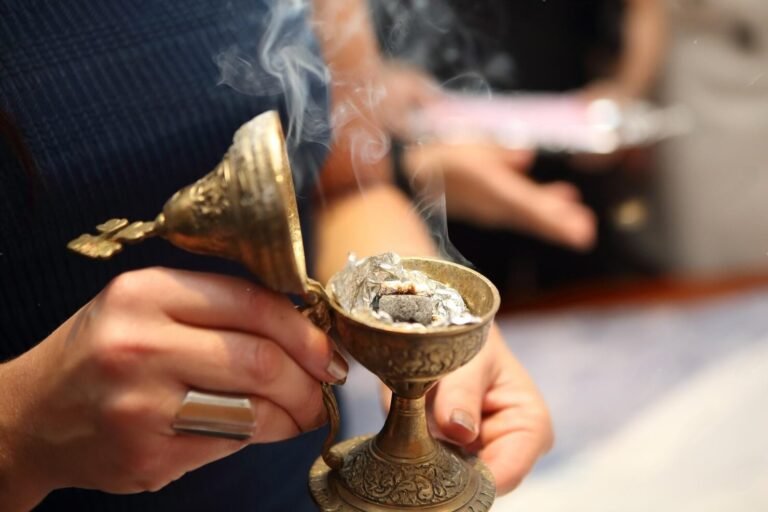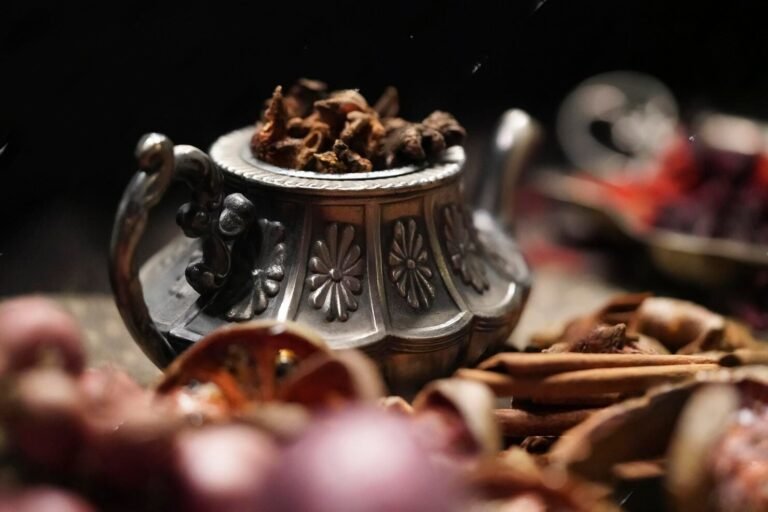Agarwood, often mistaken as mere decayed wood, reigns supreme among the “Four Great Incenses” (Chen, Tan, Long, She), earning its title as the “King of Fragrances.” Treasured by royalty and nobility throughout history—including the Qing Dynasty—this enigmatic substance embodies resilience, transformation, and natural elegance. But what exactly is agarwood? Why is it hailed as a symbol of rebirth through adversity? And how was it used in the imperial courts of ancient China?
What is Agarwood?
Agarwood is a product of nature’s alchemy, born from the interplay between internal and external forces.
It begins with trees of the Aquilaria family, which must mature to develop well-formed resin glands. External “trauma”—such as storms, lightning strikes, or insect infestations—inflicts deep wounds on the tree. When these injuries become infected by microbes, the tree responds by secreting resin to protect itself. Over time, this resin blends with the wood, forming dense, aromatic deposits. The longer the process, the darker and richer the agarwood becomes—a testament to nature’s ability to transform suffering into beauty.
Does All Agarwood Sink in Water?
A common belief is that genuine agarwood sinks in water, while floating pieces are deemed fake. But is this true?
In the Compendium of Materia Medica (Bencao Gangmu), Ming Dynasty physician Li Shizhen classified agarwood into three categories based on buoyancy: Chen (sinking), Zhan (semi-sinking), and Huangshu (floating). Historically, only sinking-grade agarwood was considered true “Chen Xiang”。

Modern science confirms that buoyancy depends on resin density. Higher resin content increases density, allowing agarwood to sink. However, floating pieces aren’t necessarily fake—they may simply be lower-grade. Quality is determined by aroma and resin richness, not just sinking ability.
Agarwood in the Qing Imperial Court
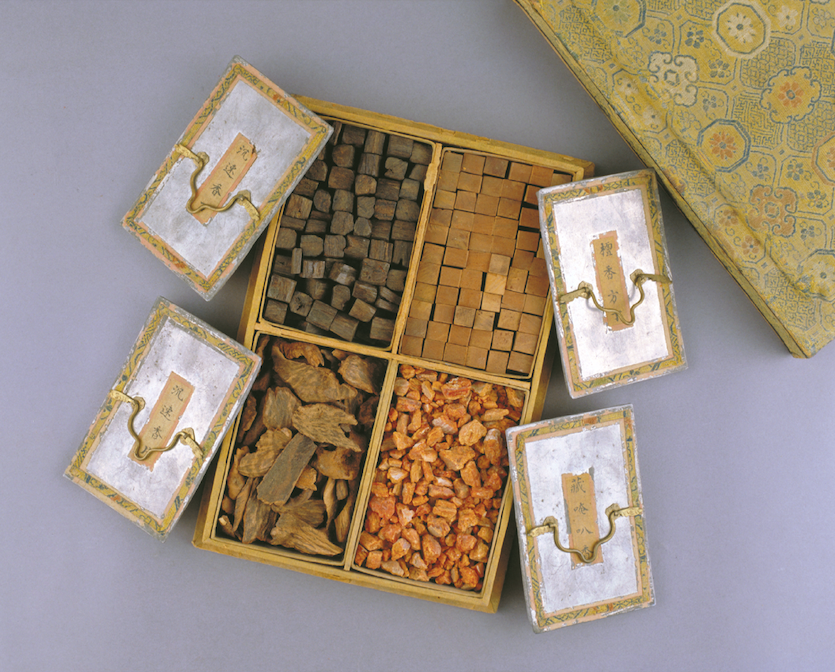
In the Qing Dynasty, agarwood was integral to daily life and rituals.
- Incense Rituals: Delicate agarwood was the star of indoor incense ceremonies. The “Four-Colored Incense” set—a Qing imperial artifact—included Chen Su agarwood slices and chips, sandalwood, and Tibetan Anba incense.
- Sacred Uses: Agarwood oil was extracted for medicinal purposes, and its wood crafted into exquisite items like Ruyi scepters and brush holders.
- Cultural Symbolism: Beyond practicality, agarwood embodied spiritual refinement, blending seamlessly into Chinese philosophy and art.
Conclusion: The Legacy of Resilience
Agarwood’s journey—from wounded tree to revered treasure—mirrors the human spirit’s capacity to thrive through hardship. Its culture, rooted in elegance and tranquility, reflects traditional Chinese values of harmony and resilience. More than a fragrance, agarwood is a bridge between nature’s raw power and humanity’s quest for beauty.
Let this phoenix-like rebirth inspire us to cherish nature’s gifts and the wisdom they carry.

